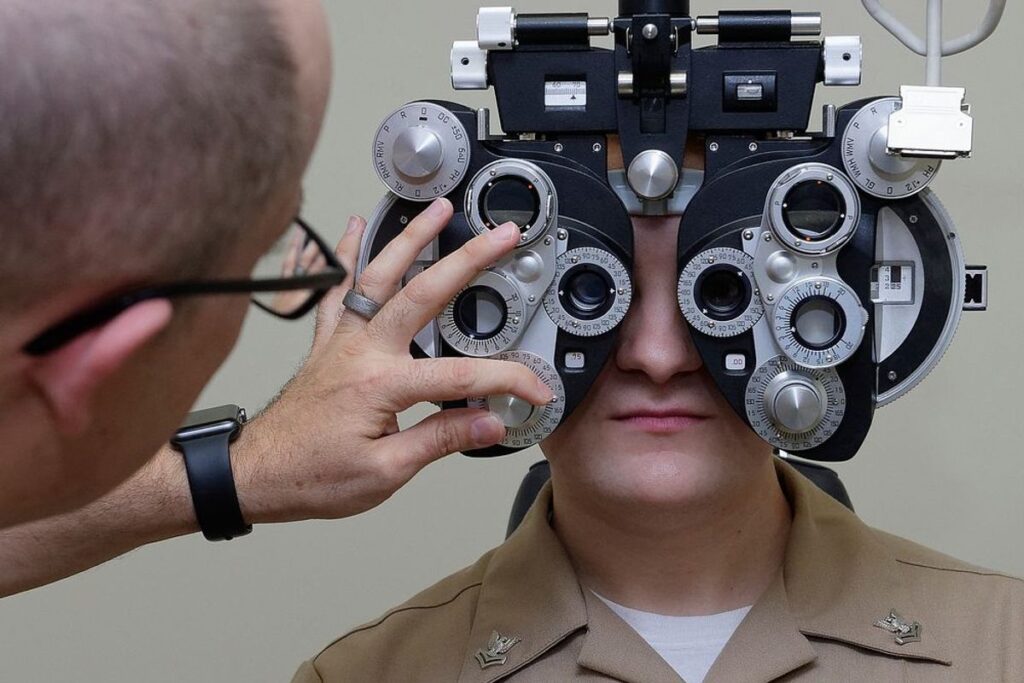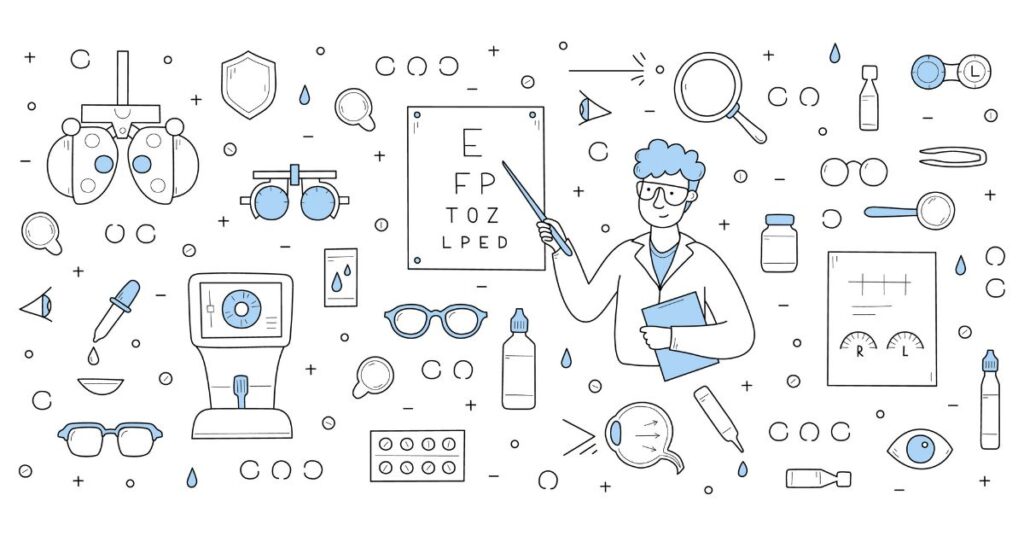Digital optometry tools have revolutionized the way eye care is delivered, offering enhanced patient experiences, improved diagnostic accuracy, and streamlined workflow processes. This article explores the impact of digital optometry tools, advancements in telemedicine for eye care, and the integration of artificial intelligence in optometry.
Key Takeaways
- Digital optometry tools enhance patient experience by providing personalized and efficient care.
- Improving diagnostic accuracy in eye care through digital tools leads to more precise and timely treatment.
- Streamlining workflow processes with digital optometry tools can increase efficiency and productivity in eye care practices.
- Advancements in telemedicine for eye care, such as remote consultations and virtual vision testing, offer convenient access to eye care services.
- The integration of artificial intelligence in optometry enables automated refraction analysis, AI-powered disease detection, and personalized treatment recommendations for patients.
The Impact of Digital Optometry Tools

Enhancing Patient Experience
The advent of digital optometry tools has significantly enhanced the patient experience in eye care. These innovative solutions offer a more comfortable and convenient process for patients, from scheduling appointments to undergoing eye examinations.
- Ease of Scheduling: Patients can book their appointments online at any time, without the need to call during office hours.
- Reduced Wait Times: With better resource management, clinics can minimize patient wait times.
- Comfortable Examinations: Advanced equipment provides a less invasive and more comfortable testing experience.
The integration of digital tools in optometry practices not only streamlines the patient’s journey but also fosters a more engaging and personalized approach to eye care. This shift towards patient-centric services is a testament to the evolving landscape of healthcare delivery.
Improving Diagnostic Accuracy
The advent of digital optometry tools has marked a significant leap in the improvement of diagnostic accuracy. These tools leverage advanced imaging technologies and algorithms to detect eye conditions with greater precision than ever before.
- Automated Retinal Scanners provide detailed images of the retina, allowing for early detection of diseases such as diabetic retinopathy.
- Optical Coherence Tomography (OCT) offers cross-sectional views of the eye, essential for diagnosing glaucoma and macular degeneration.
- Corneal Topography maps the curvature of the cornea, vital for assessing the severity of astigmatism.
The precision of these diagnostic tools means that eye care professionals can identify and treat eye conditions at an earlier stage, often before patients notice any symptoms. This proactive approach can lead to better outcomes and preserve vision.
The integration of these technologies into routine eye examinations has not only bolstered the confidence of optometrists in their clinical assessments but also provided patients with a more thorough understanding of their eye health.
Streamlining Workflow Processes
The advent of digital optometry tools has revolutionized the way eye care professionals manage their daily operations. Digital patient records and scheduling systems have significantly reduced the time spent on administrative tasks, allowing practitioners to focus more on patient care.
- Electronic Health Records (EHR) enable quick access to patient histories.
- Automated appointment reminders reduce no-show rates.
- Inventory management systems ensure essential supplies are always in stock.
By integrating these tools, clinics can experience a marked improvement in efficiency, reducing wait times and enhancing overall service quality.
The table below highlights the impact of digital tools on workflow efficiency:
Advancements in Telemedicine for Eye Care

Remote Consultations
The advent of remote consultations has revolutionized the way optometrists engage with patients. Teleoptometry enables eye care professionals to extend their reach beyond the confines of traditional clinics. This digital approach not only caters to patients in remote or underserved areas but also offers convenience for those with mobility issues or tight schedules.
Patients can now have preliminary eye examinations and follow-up appointments from the comfort of their own homes. The process typically involves:
- A virtual appointment scheduled at a convenient time for the patient.
- The use of a secure video conferencing platform for the consultation.
- Sharing of digital eye charts and vision tests that patients can interact with.
- Discussion of symptoms, concerns, and the patient’s ocular history.
The integration of remote consultations into optometry practices has shown to maintain a high level of patient satisfaction while ensuring that essential eye care services remain accessible.
While remote consultations offer numerous benefits, they also require optometrists to adapt to new technologies and communication methods. Ensuring patient data security and privacy is paramount, and practitioners must be well-versed in the legal and ethical considerations of providing care at a distance.
Virtual Vision Testing
The advent of virtual vision testing has revolutionized the way eye care professionals assess visual acuity and eye health from a distance. Patients can now undergo a comprehensive eye exam without leaving their homes, leveraging the convenience of digital platforms. This innovation is particularly beneficial for individuals in remote areas or those with mobility challenges.
- Convenience and accessibility for patients
- Reduced need for in-person visits
- Potential for early detection of vision problems
Virtual vision testing tools are designed to be user-friendly, ensuring that a wide range of patients can perform the tests with minimal assistance. The results are then reviewed by eye care professionals, who can provide feedback and prescriptions as needed.
These tools are not only convenient but also cost-effective, as they can reduce the number of in-person visits and associated travel expenses. As the technology continues to improve, virtual vision testing is poised to become an integral part of routine eye care.
Teleophthalmology Services
Teleophthalmology services are revolutionizing the way eye care is delivered to patients, particularly in remote and underserved areas. By leveraging digital communication tools, specialists can now provide expert eye care from a distance, overcoming geographical barriers.
The benefits of teleophthalmology are numerous, including increased access to care, cost savings for patients, and the ability to quickly connect with a specialist. These services are not only convenient but also ensure that high-quality eye care is more equitable and accessible.
Teleophthalmology has the potential to significantly reduce the burden on traditional healthcare systems by providing an efficient alternative for routine check-ups and follow-up appointments.
Here’s a quick look at the types of services offered through teleophthalmology:
- Remote diagnosis and management of eye conditions
- Digital prescription renewals
- Monitoring of chronic eye diseases
- Post-operative care and consultations
As the technology continues to advance, we can expect teleophthalmology to become an integral part of the eye care ecosystem, further enhancing patient outcomes and healthcare delivery.
Integration of Artificial Intelligence in Optometry

Automated Refraction Analysis
The advent of automated refraction analysis has revolutionized the way optometrists determine prescriptions for corrective lenses. This technology offers a high degree of precision, reducing the likelihood of human error and ensuring that patients receive the most accurate corrective measures.
Automated systems can perform a comprehensive analysis in a fraction of the time it takes for a traditional eye exam, leading to a more efficient patient throughput. Below is a comparison of traditional vs automated refraction:
The integration of automated refraction systems into clinical practice not only enhances the patient experience but also allows optometrists to focus on more complex diagnostic tasks and patient care strategies.
As these systems continue to improve, they are becoming an indispensable tool in the modern optometrist’s arsenal, enabling them to deliver superior eye care and manage a larger patient base effectively.
AI-Powered Disease Detection
The integration of artificial intelligence (AI) in optometry has revolutionized the way eye diseases are detected. AI algorithms can now analyze retinal images with remarkable precision, identifying signs of diseases such as diabetic retinopathy, glaucoma, and age-related macular degeneration at their earliest stages. This early detection is crucial for timely intervention and can significantly improve patient outcomes.
AI’s ability to learn from vast datasets allows it to recognize patterns that may be too subtle for the human eye.
The following table illustrates the performance enhancement in disease detection due to AI implementation:
AI not only enhances detection rates but also reduces the time required for diagnosis, allowing optometrists to focus on treatment planning and patient care. The adoption of AI-powered tools in clinical practice is a testament to the ongoing digital transformation in eye care.
Personalized Treatment Recommendations
The integration of artificial intelligence in optometry has paved the way for personalized treatment recommendations, tailoring eye care to the individual needs of patients. By analyzing vast datasets, AI algorithms can suggest the most effective treatment plans, taking into account a patient’s unique ocular history, genetic factors, and lifestyle.
- Identification of risk factors
- Customized lens prescriptions
- Tailored follow-up schedules
The precision of AI-driven recommendations promises to enhance the efficacy of treatments and improve long-term outcomes for patients.
This personalized approach not only optimizes patient care but also contributes to the advancement of predictive medicine in optometry, potentially reducing the incidence of preventable vision impairments.
The integration of Artificial Intelligence (AI) in optometry is revolutionizing the way we understand and manage eye health. By harnessing the power of AI, optometrists can now provide more accurate diagnoses, personalized treatment plans, and predictive analytics for better patient outcomes. To learn more about how AI is shaping the future of eye care, visit our website and explore the innovative OPTIGRID platform. Take the first step towards a smarter approach to optometry by signing in today!
Conclusion
In conclusion, the rise of digital optometry tools is revolutionizing the field of eye care. These innovative technologies are enhancing the efficiency, accuracy, and accessibility of eye care services, ultimately improving patient outcomes. As we continue to embrace and integrate digital optometry tools into practice, we can expect to see further advancements in eye care delivery and patient experience. The future of eye care is indeed bright with the transformative power of digital optometry tools.
Frequently Asked Questions
How do digital optometry tools enhance the patient experience?
Digital optometry tools provide a more interactive and personalized experience for patients, allowing for better communication and understanding of their eye health.
What are the benefits of improving diagnostic accuracy with digital tools?
Improving diagnostic accuracy with digital tools leads to early detection of eye conditions, better treatment outcomes, and overall improved patient care.
How do digital optometry tools streamline workflow processes in eye care practices?
Digital optometry tools automate administrative tasks, reduce manual errors, and improve efficiency in managing patient records and appointments.
What are the key features of telemedicine for eye care, such as remote consultations?
Telemedicine for eye care enables patients to consult with optometrists remotely, saving time and increasing accessibility to eye care services.
How does AI contribute to automated refraction analysis in optometry?
AI algorithms analyze refractive errors in eye exams quickly and accurately, assisting optometrists in prescribing the right corrective lenses for patients.
What role does AI play in personalized treatment recommendations for eye conditions?
AI analyzes patient data to provide personalized treatment plans, considering individual factors like medical history, lifestyle, and genetic predispositions.

I am a seasoned software engineer with over two decades of experience and a deep-rooted background in the optical industry, thanks to a family business. Driven by a passion for developing impactful software solutions, I pride myself on being a dedicated problem solver who strives to transform challenges into opportunities for innovation.
